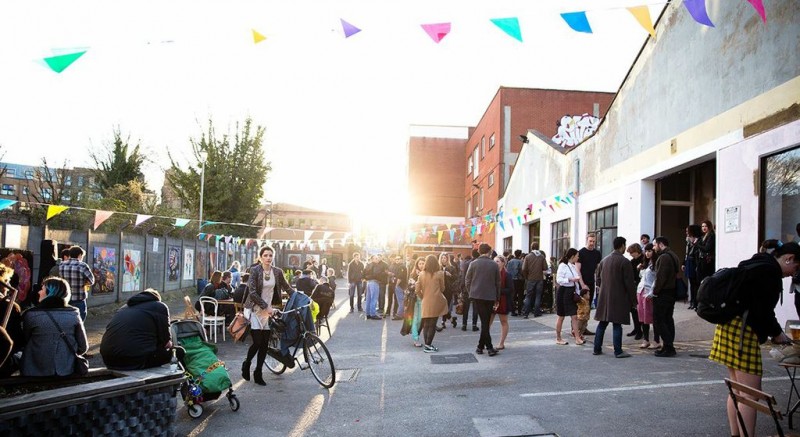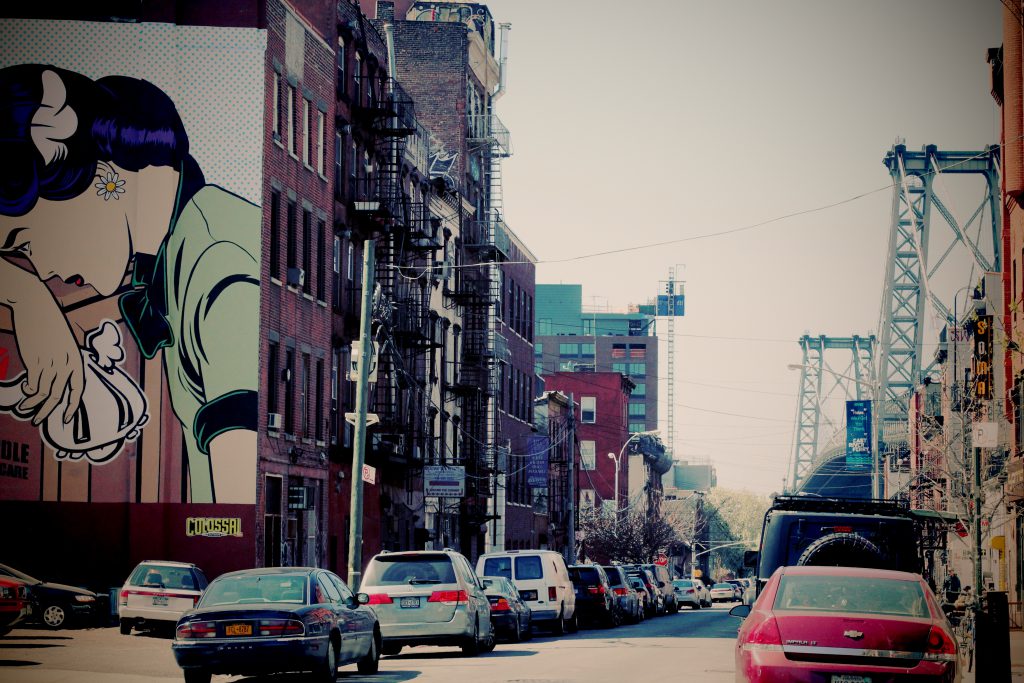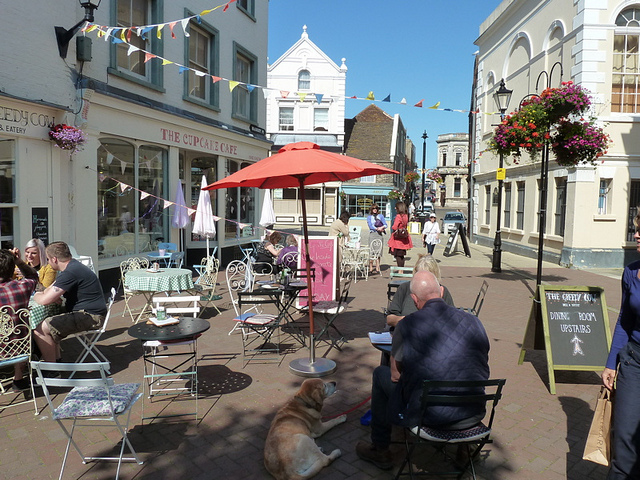Here we reclaim the much maligned term “hipster” and sing their praises for their contribution to regeneration.
The word hipster is much maligned. The media has helped turn a sector of young folk who are interested in new things and being a bit different – someone who in the past might have been described as cool and hip – into a caricature. Its derogatory connotation is impossible to avoid. But the fact is there is nothing derogatory about hipsters when it comes to regeneration as “hipster led regeneration” has and is creating value around the world, often in places where government investment has failed.
Certain people have what I call ‘’the eye’’. “The eye” allows you to spot things and live well without very much money. Being brought up in a creative household where music, fashion, film and making were central to life, my mum, nan and pop bestowed “the eye” on me. It manifested itself from when I was 13 years old and wearing army surplus and second-hand, as new clothes were a luxury not really afforded to me. This enabled me to dress and go out on the cheap. As I got older I could apply that intuition to the business I started with my wife, who is equally creative and able to spot quality in things others might dismiss.
During the building of our first brand Red or Dead we opened a shop in the early 80s on Neal Street – now a buzzing part of fashionable London, but then it had no fashion shops and was a rather dowdy area stocked full of white good repair shops. We took a risk and acted outside of the mainstream. Our “eye”, allowed us to spot a place that city investment and mainstream money wouldn’t go. We grew our business by spotting Neal St equivalents in half a dozen UK cities and another dozen locations around the world.
Here are some contemporary examples of “hipster led regeneration”.
Hackney
Up until not long ago there were a number of failing parts of London, some were considered basket cases. Hackney had some of the highest deprivation indices and many would argue that government money that was thrown into it had little to no impact. But look at it now. That impact did come, but it happened from the people without money, colonising the space because it was cheap. That’s the impetuosity of the hipster – they take risks, often because there is no choice.

Institutional money is risk adverse. Hipsters tend to be people of a certain age where risk happens. And when a clique of people takes risks together, you can create a self-serving community. They’re almost like pioneers of the west coast of America in the nineteenth century – which led to the creation of LA and San Francisco. Those pioneers were the hipsters of their time. I think the word hipster should be changed to ‘urban pioneer’.
And don’t get me started about the accusation that all this leads to gentrification. Should gentrification be a dirty word? Many people say that East London has gentrified – because it’s all cafes and interesting little shops. Well if that’s gentrification, bring it on. It’s better than betting shops that just encourage folk who can’t afford to gamble to gamble. And what’s better a greasy kebab shop on every corner or a nice café that happens to have a man with a beard serving you decent hot chocolate and healthy bites? And which of these is likely to grow and create employment? There are critics of my thinking but I can beat their arguments every time!
Mitte district, Berlin
After the Berlin Wall came down, the Mitte district became a place for artists and those on the left field of the German society. For the mainstream the Mitte was often considered a place that you just didn’t go near. To a large extent the new government left it alone. Now it’s widely recognised as the most culturally diverse and forward thinking place in Berlin and has become a significant visitor attraction in its own right.
Williamsburg, New York
Could you imagine Williamsburg having the reputation it has today only 10 or 15 years ago? When we were doing shows in NY in the 80s and 90s, we never thought about going into Brooklyn. If anyone were to do that it would be the inquisitive design community, and yet it didn’t happen. You never thought about it, as it was dangerous. It certainly wouldn’t have inspired one of the world’s most famous footballers to name his son after it! Hipsters made it cool, simple as that. Manhattan became too expensive and its values – Wall Street, greed, high rises, just didn’t match those of a the new generation.

When we were there recently, we were based in Brooklyn for the entire trip. We were shopping in an incredible market and we asked if there were any decent markets taking place in Manhattan that weekend. The girl we asked replied ‘how would we know, we never go to Manhattan, our life is here, this is our New York”. At first I was cynical, but after a few days living in Brooklyn it struck me that they don’t indeed need Manhattan, they’ve made a better life for themselves in Williamsberg. People who are more sustainable in their thinking, they’re more left of centre. Manhattan is the old way of doing things. In time Williamsburg will also become the ‘old way’ and somewhere else will take its place. And yes you can say that the chains are moving in and it’s losing its edge, but for every shop with an expensive refurb, there’s 6 or 7 done up by mum and dad painting the floors and the siblings doing the walls. People are getting on and doing something, not waiting for you to do it for them. They’re not moaning about the world, they’re getting on and doing it their way.
Margate
A seaside town that again the press often depicts as a bit of a basket case. I have one word for it: amazing! Margate is truly walking with a swagger these days. People are moving from their one bedroom flats in London to a four bedroom house and opening cafes, gallery shops.

Every time I go there I see more young couples doing something interesting with an old building. There is a cultural institution there, The Turner Contemporary, that has helped to “gild brand Margate“. Margate is not being given a leg up by city folk like in Whitstable. These are young, often creative, without vast sums of money who are spotting an opportunity that is relatively affordable evocative property, a sandy beach, within reach of London and some likeminded pioneers. My god its exciting there. I look at it as a place full of exciting opportunities. You know that in ten years’ time it won’t be a failed Portas High St – it’ll be a cool town.
Jo-burg
South Africa to many people means one thing: Cape Town. Johannesburg if considered, is often considered a dangerous place to be avoided. While that might be the case for some areas, there are others that are really changing. It’s not changing with thrusting high rises, its hipsters. It’s in the process, Virgin Atlantic are talking about it in the in-flight magazine, go see it happen.
Red October, Moscow
I don’t associate Moscow with areas that are ‘cool’. Yet changes through young artistic types leading the way is even happening here, go check it out.
Detroit
From small shoots and all that – Detroit clearly has a long way to go, but have faith in young people to be creative and to find a way. Humans will always find a way at bringing places back to life. We’re brilliant at reinventing. So don’t sneer. Yes it’s hard to imagine in this economic climate and Detroit does have enormous issues to solve, but all it takes is for pockets of people to get together, and they are doing. It’s the urban pioneer, going out and exploring and finding the new places and saying ‘try it here. Bring your money here’’.
Have a look at what the Guardian had to say about this topic a few months later.